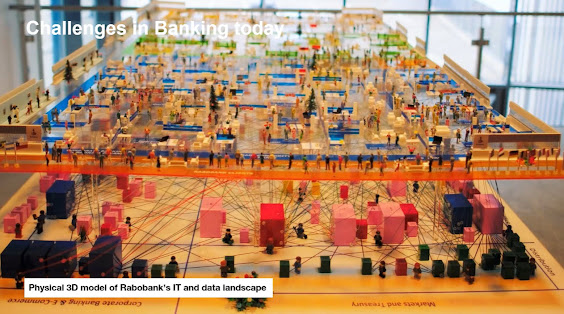Creeping Normality, Integration Hairball, and Why Most Organizations are Not Ready for AI
Per one measurement, the average enterprises uses 275 software applications to get their work done. Each of those software applications don't tend to talk to one another unless work is done to integrate software with other software.
Most enterprises operate with a multitude of relational databases with inconsistent schemas; electronic spreadsheets; electronic word processor documents; HTML documents; PDF files; email messages; system log files; APIs; with what amounts to bailing wire, band aids, duct tape, and human effort holding everything together.
Creeping normality, as described by Wikipedia, is the phenomenon where a significant change becomes normalized through a series of small, gradual steps. What might be shocking or unacceptable if implemented abruptly becomes commonplace over time.
This concept is particularly relevant to the issue of data silos within organizations. Year after year, quick fixes and short-term solutions lead to the integration of various applications in a piecemeal fashion. These 'point-to-point' integrations create isolated systems that ultimately hinder overall efficiency.
The root cause often lies in prioritizing immediate gratification over long-term planning. Decision-makers are more likely to choose the readily available solution, even if it creates problems down the line.
The tendency to 'kick the can down the road' is a major obstacle to effective data management. By resisting short-term expediency and focusing on long-term goals, organizations can avoid the pitfalls of creeping normality and build a more cohesive data infrastructure.
But delayed gratification and longer term solutions are not the norm; and so we have this mess. The integration of systems is a hairball and the mess needs to be untangled. There are two factors that might lead this mess to be untangled: (a) continuing down this same path of short term solutions will make the problem even bigger and (b) organizations will be hard pressed to get artificial intelligence to actually work in their organizations with this existing hairball.
As an example, here is a 3D model that Rabobank created of their IT landscape:
Now, not every organization is as complicated as Rabobank. But, as Rob Thomas, O’Reilly Media, Inc., points out in his report, The AI Ladder, most organizations are not ready for AI.
But there is good news! As Dave McComb points out in his book, Software Wasteland, over three quarter of IT spending is wasted.
As I see it, what AI will cause is for organizations to clean up the mess that was created over the past 50 to 70 years.
Per The AI Ladder (page 1), artificial intelligence has the potential to add almost 16 trillion dollars to the global economy by 2030. AI is poised to transform organizations across every industry and alter the very way people work. According to Gartner, AI augmentation (a combination of human and artificial intelligence) will recover 6.2 billion hours of worker productivity in 2021. Not sure if that happened, yet, but I doubt it. Gotta clean up that mess.
The AI Ladder continues that despite these promising forecasts, AI adoption has been slower than anticipated. It has been reported that 81% of business leaders do not understand the data and infrastructure required for AI.
People, AI will not work for your organization the way it could work until you clean up the mess that has been created. That is step 1. You need to untangle your hairball information technology infrastructure.
Additional Information:




Comments
Post a Comment